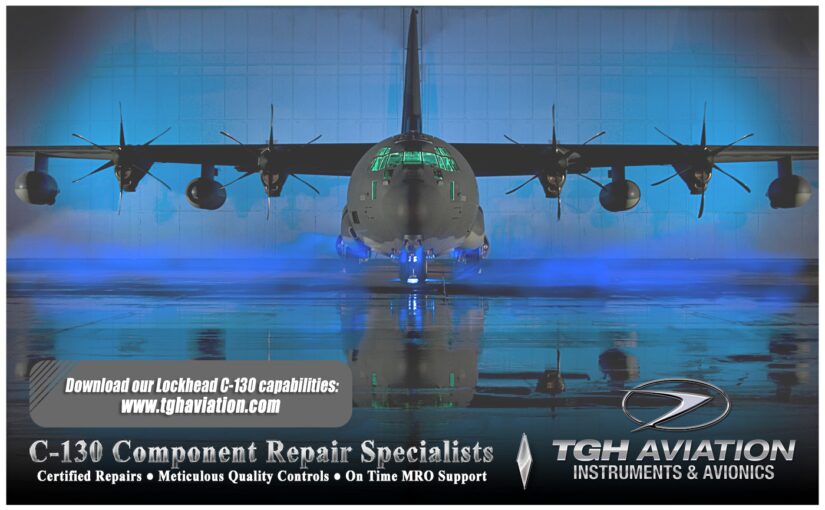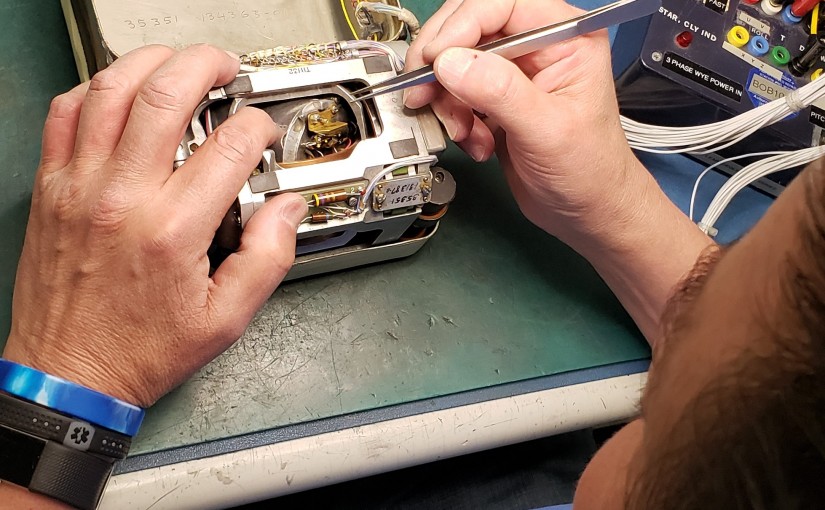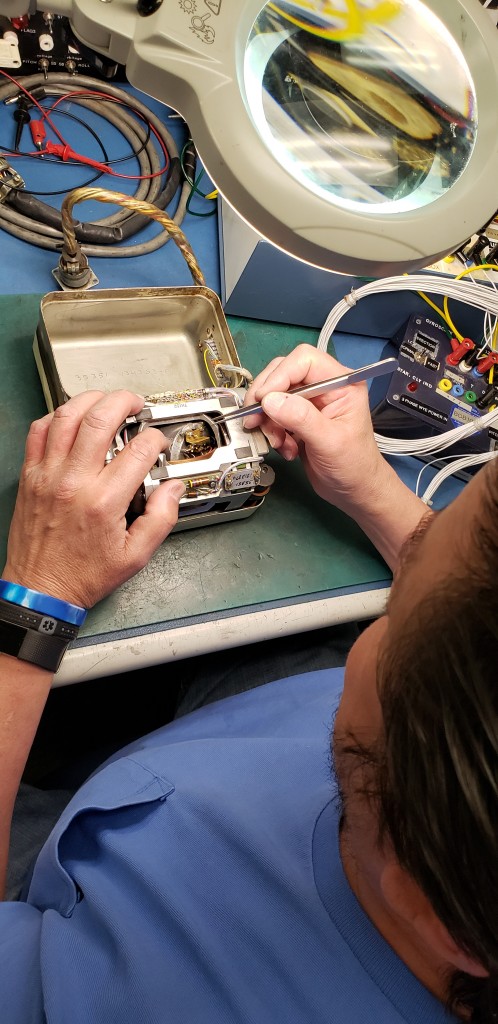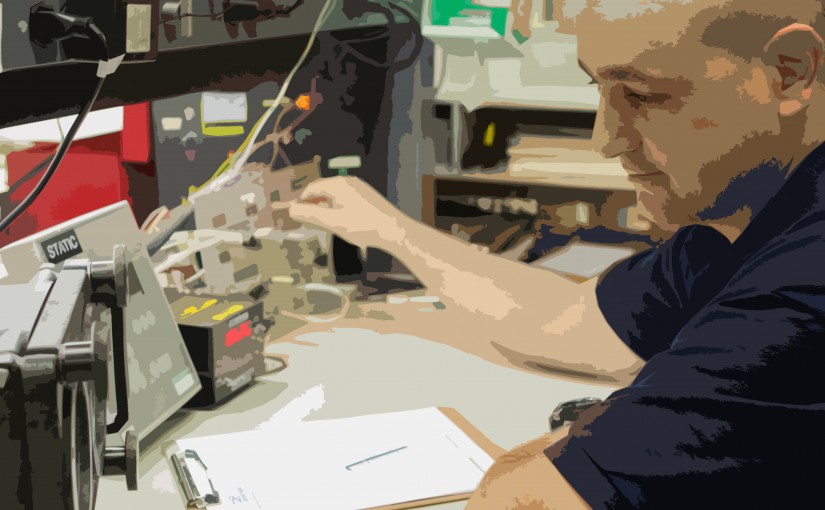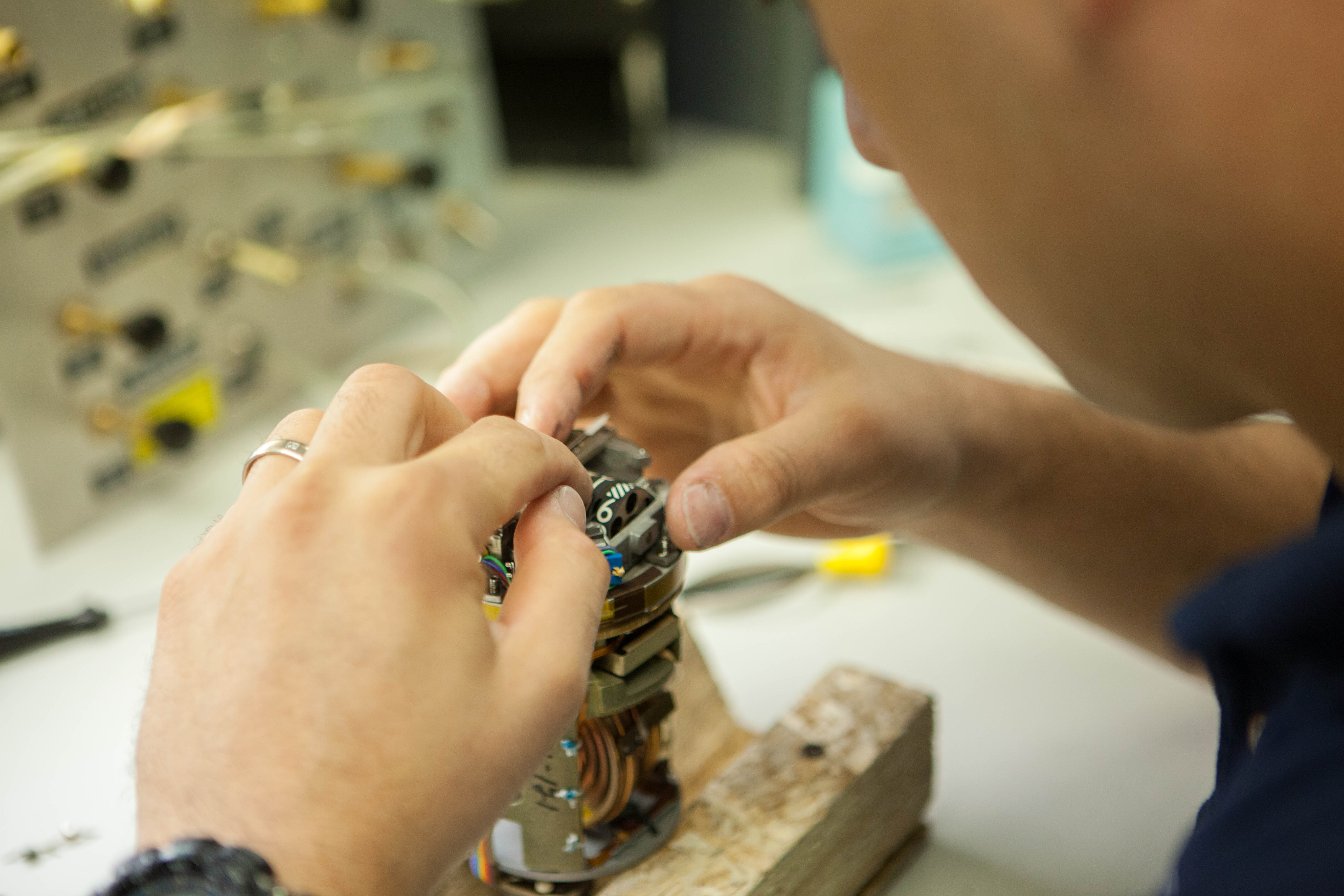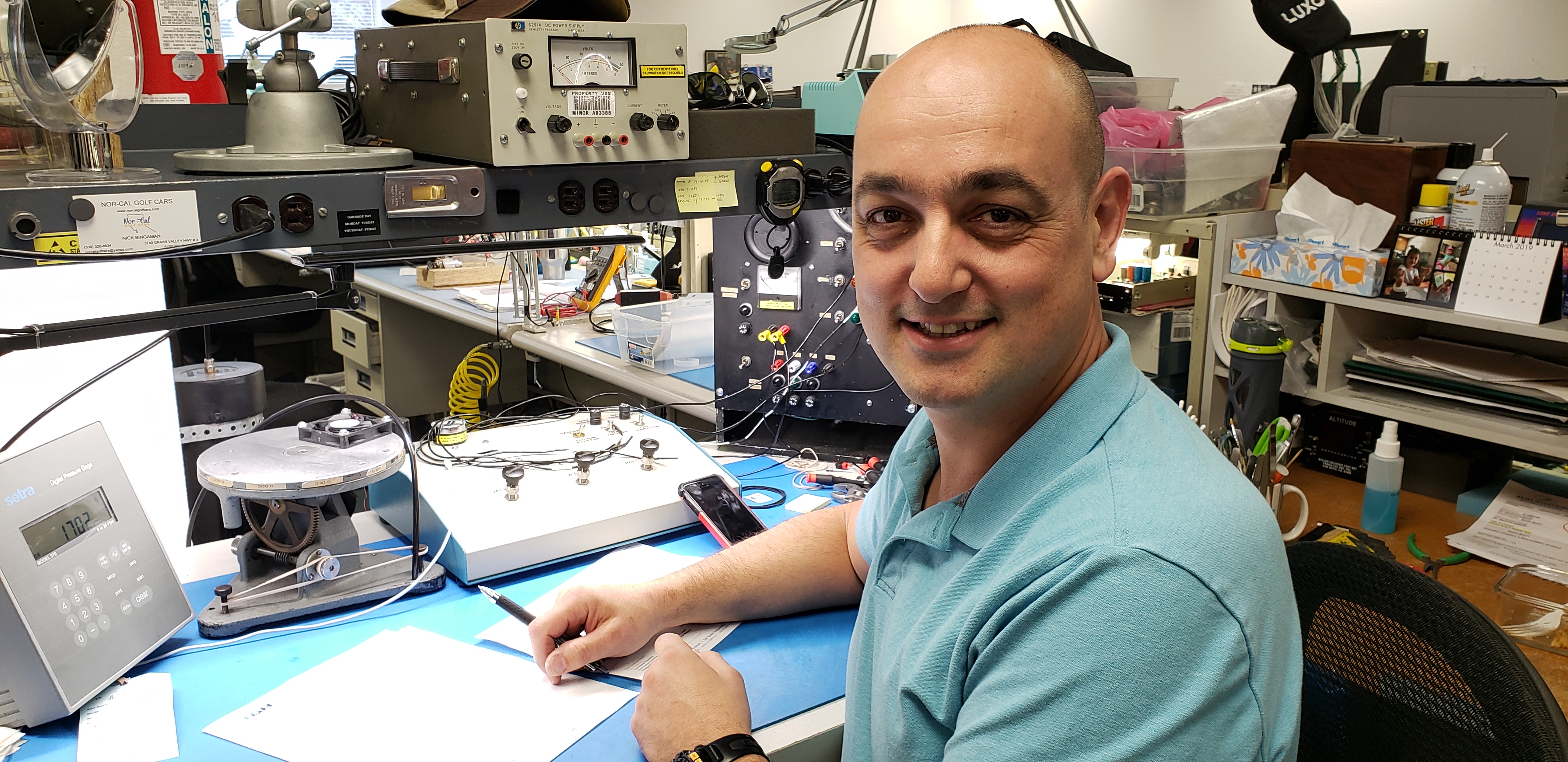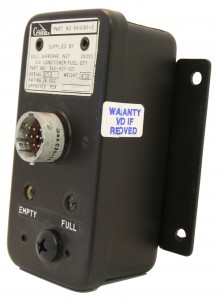Theory of Operation (Resistive FQM Systems)
For the purposes of discussing the operation of the Resistive Fuel Quantity Measurement System, in the paragraph below, the following assumptions are to be made:
1. The aircraft utilizes a 28 Volt DC Power Supply
2. The meter movement within the indicator is the most common type used, which is a 100mv, d’arsonval type. This means that it requires 100mv of electrical current to drive the pointer on the meter movement from zero deflection to full deflection.
When power (V+) is applied to one side the resistive element and ground is applied to the other end and the desired maximum electrical current is 100mv, then Ohm’s Law can be applied in order to determine the required value for the resistive element as follows:
R = E/I
Where R= Resistance, E= Voltage and I = Current.
Since the values of E and I are known, 28 Volts DC and 100mv respectively, then R is resolved as follows:
28/.1 = 280
Therefore the value of the resistive element to be used is equal to 280 Ohms at its minimum value, which would equate to a maximum current flow of 100mv.
A reasonable design, would dictate that the system would change 1mv for each 1% of fuel used. Using that model then 1mv (1% of the fuel remains) would be our zero point on our indicator. Once again Ohm’s Law dictates the value of our resistive element as follows:
28/.01 = 2800 Ohms
Therefore our resistive element must be variable from 280 ohms up to 2,800 Ohms.
The operation of the system is now very straight forward, when the fuel tank is empty the float is at its very lowest point and the wiper resistive element follows the float. Therefore the wiper is at the point of the resistor which is closest to ground and furthest from the source of power or 2800 Ohms. This would provide only 1mv of power to the meter movement and only 1% deflection of the pointer or our Zero (EMPTY) setting.
When the fuel tank is full the float and wiper both will be at their highest point, closest to the source of power or 280 Ohms. This would provide 100mv of power to our meter movement and 100% deflection of the pointer or our FULL setting.
As the voltage is constant and both electrical current and resistance are perfectly linear then our pointer travel will also be perfectly linear.
Stay tuned for upcoming Blogs


